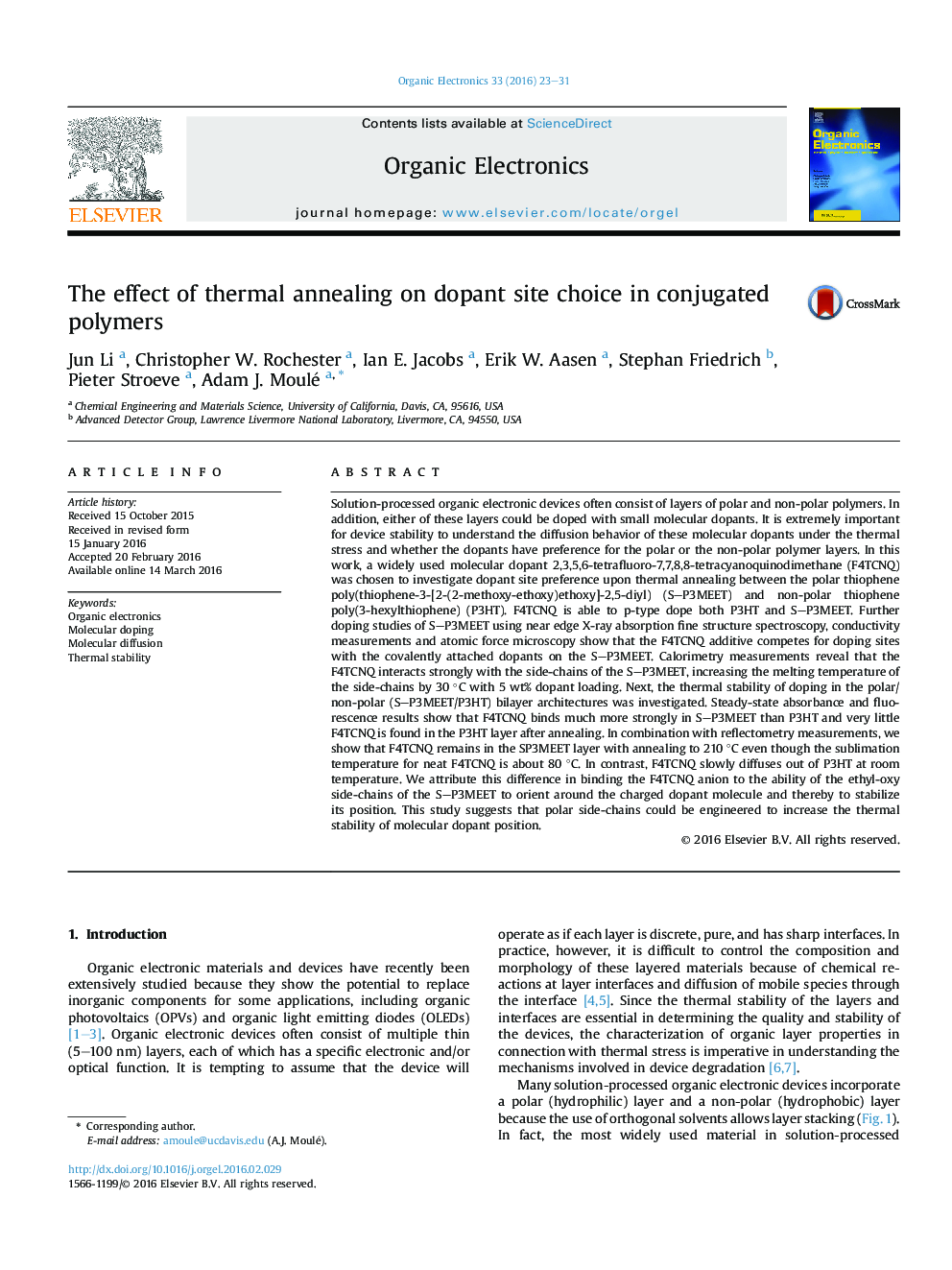| Article ID | Journal | Published Year | Pages | File Type |
|---|---|---|---|---|
| 1264208 | Organic Electronics | 2016 | 9 Pages |
•Transparent conductive polymer S–P3MEET can be p-type doped by F4TCNQ.•Dopant additive competes for doping sites covalently attached on the polymer.•F4TCNQ doped S–P3MEET shows increased melting temperature of the side chains.•F4TCNQ binds much more strongly under thermal stress in S–P3MEET than in P3HT.•Polar side-chains in polymers increases the thermal stability of molecular dopants.
Solution-processed organic electronic devices often consist of layers of polar and non-polar polymers. In addition, either of these layers could be doped with small molecular dopants. It is extremely important for device stability to understand the diffusion behavior of these molecular dopants under the thermal stress and whether the dopants have preference for the polar or the non-polar polymer layers. In this work, a widely used molecular dopant 2,3,5,6-tetrafluoro-7,7,8,8-tetracyanoquinodimethane (F4TCNQ) was chosen to investigate dopant site preference upon thermal annealing between the polar thiophene poly(thiophene-3-[2-(2-methoxy-ethoxy)ethoxy]-2,5-diyl) (S–P3MEET) and non-polar thiophene poly(3-hexylthiophene) (P3HT). F4TCNQ is able to p-type dope both P3HT and S–P3MEET. Further doping studies of S–P3MEET using near edge X-ray absorption fine structure spectroscopy, conductivity measurements and atomic force microscopy show that the F4TCNQ additive competes for doping sites with the covalently attached dopants on the S–P3MEET. Calorimetry measurements reveal that the F4TCNQ interacts strongly with the side-chains of the S–P3MEET, increasing the melting temperature of the side-chains by 30 °C with 5 wt% dopant loading. Next, the thermal stability of doping in the polar/non-polar (S–P3MEET/P3HT) bilayer architectures was investigated. Steady-state absorbance and fluorescence results show that F4TCNQ binds much more strongly in S–P3MEET than P3HT and very little F4TCNQ is found in the P3HT layer after annealing. In combination with reflectometry measurements, we show that F4TCNQ remains in the SP3MEET layer with annealing to 210 °C even though the sublimation temperature for neat F4TCNQ is about 80 °C. In contrast, F4TCNQ slowly diffuses out of P3HT at room temperature. We attribute this difference in binding the F4TCNQ anion to the ability of the ethyl-oxy side-chains of the S–P3MEET to orient around the charged dopant molecule and thereby to stabilize its position. This study suggests that polar side-chains could be engineered to increase the thermal stability of molecular dopant position.
Graphical abstractFigure optionsDownload full-size imageDownload as PowerPoint slide
